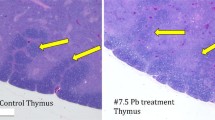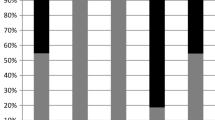Abstract
Worldwide feral pigs threaten native biodiversity, agricultural production and pose a risk to biosecurity as potential disease vectors. In New Zealand, the management of feral pigs has long been restricted to hunting, trapping, fencing and limited poisoning with 1080, warfarin and phosphorus. Sodium nitrite (NaNO2) is commonly used at very low concentrations in the food industry. At high doses, NaNO2 induces methaemoglobinaemia in mammals restricting the transport of oxygen by the red blood cell and in toxic doses leads to central nervous system anoxia, lethargy and death. Pen and field trials with pigs have been undertaken with an encapsulated formulation of NaNO2, designed to overcome the bitter taste of NaNO2 and mixed into a palatable paste bait. In pen trials, eight out of nine pigs consumed a lethal dose of paste bait. The average time to death was 59.5 min (±23.96 SD); symptoms lasted an average of 42.13 min (±19.12 SD) and included pale extremities, lethargy and ataxia. In a field trial, 12 radio-collared feral pigs were baited with the toxic paste bait formulation in prototype bait stations, where 11 of the 12 pigs consumed a lethal dose. Encapsulated NaNO2 has potential as an additional tool for the management of feral pigs, particularly when shooting and hunting is not practical or possible. Data in these studies were used to register this bait as a vertebrate toxic agent for feral pig management in New Zealand. This represents the first known registration of NaNO2 worldwide for use as a vertebrate toxic agent.

Similar content being viewed by others
References
Batema B, Meddens A (2006) Effects of feral pigs on the maintenance and restoration of native forest in the Hawkeswood Range, New Zealand. M.Sc Thesis, Wageningen University
Binkerd EF, Kolari OE (1975) The history and use of nitrate and nitrite in curing of meat. Food Cosmet Toxicol 13:655–661
Bouchet G, Bouchet A (1938) Toxicity of sodium nitrite (translated abstract from the Veterinary Bulletin). B Acad Vet France 11:433–435
Bradberry S (2011) Methaemoglobinaemia. Complications of poisoning. Medicine 40(2):59–60
Brescia F, Pöllabauer C, Potter M, Robertson A (2008) A review of the ecology and conservation of Placostylus (Mollusca: Gastropoda: Bulimulidae) in New Caledonia. Molluscan Res 28(2):111–122
Choquenot D, McIlroy J, Korn T (1996) Managing vertebrate pests: feral pigs. Bureau of Resource Sciences, Australian Government Publishing Service, Canberra
Choquenot D, Lukins B, Curran G (1997) Assessing lamb predation by feral pigs in Australia’s semi-arid rangelands. J Appl Ecol 34(6):1445–1454
Cockburn A, Brambilla G, Fernández M, Arcella D, Bordajandi L, Cottrill B, van Peteghem C, Dorne J (2013) Nitrite in feed: from animal health to human health. Toxicol Appl Pharm 270:209–217
Counter DE, Giles N, Redmond R (1975) Stored rainwater as a cause of nitrite poisoning in pigs. Vet Rec 96:412
Cowled B, O’Connor C (2004) A project that investigates current options for managing feral pigs in Australia and assesses the need for the development of more effective and humane techniques and strategies—Stage 3 Report. Pest Animal Control Cooperative Research Centre, Canberra. http://www.environment.gov.au/biodiversity/invasive/publications/feral-pig/stage3.html
Cowled BD, Elsworth P, Lapidge SJ (2008) Additional toxins for feral pig (Sus scrofa) control: identifying and testing Achilles’ heels. Wildl Res 35:1–12
Cozzens T, Gebhardt K, Shwiff S, Lutman M, Pedersen K, Swafford S (2010) Modeling the economic impact of feral swine-transmitted foot-and- mouth disease: a case study from Missouri. USDA National Wildlife Research Center—Staff Publications. Paper 1262
Davis DS (1998) Feral hogs and disease: implications for humans and livestock. Department of Veterinary Pathology, Texas A&M University, College Station
Deeb BS, Sloan KW (1975) Nitrates, nitrites and health. Bulletin no. 750. University of Illinois, Urbana-Champaign
Eason CT, Morgan D, Fisher P, Hopkins B, Cowan P (2006). Reflection on improvements in vertebrate pesticides: 1996–2006. Proceedings 22nd Vert Pest Conference, University of California, Davis, pp 406–412
Eason CT, Lapidge SJ, Hix S, MacMorran D (2009) The effectiveness of an encapsulated formulation of a new pig toxin in pen trials. Connovation Ltd. Unpublished Report p 11
Eason CT, Fagerstone KA, Eisemann JD, Humphrys S, O’Hare JR, Lapidge SJ (2010a) A review of existing and potential New World and Australasian vertebrate pesticides with a rationale for linking use patterns to registration requirements. Int J Pest Manag 56(2):109–125
Eason CT, Murphy E, Hix S, MacMorran D (2010b) The development of a new humane toxin for predator control. Integr Zool 1:443–448
Eason CT, Miller A, MacMorran D, Murphy EC (2014) Toxicology and ecotoxicology of PAPP for pest control in New Zealand. New Zeal J Ecol 38(2):177–188
Epley RJ, Addis PB, Warthesen JJ (1992) Nitrite in meat. Minneapolis: Minnesota extension service, University of Minnesota. http://www.extension.umn.edu/distribution/nutrition/DJ0974.html. Accessed 30 Sep 2001
ERMA (2007) The reassessment of 1080: an informal guide to the August 2007. Decision of the Environmental Risk Management Authority. ISBN 978-0-478-21538-0, p 28
Fisher P, O’Connor C, Murphy E (2005) Acute oral toxicity of a potential vertebrate pesticide, p-aminopropriophenone, in stoats (Mustela erminea). New Zeal J Zool 32:163–169
Fisher P, O’Connor CE, Morriss G (2008) Oral toxicity of p-aminopropiophenone to brushtail possums (Trichosurus vulpecula), dama wallabies (Macropus eugenii), and mallards (Anas platyrhynchos). J Wildl Dis 44:655–663
Foster JA (2011) Effects of sodium nitrite on feral swine and non-targets. Performance report for Texas Parks and Wildlife as required by Federal Aid in Wildlife Restoration Act. Federal Aid Grant No. W-132-R-9. p 11
Hutton T, Deliberto T, Owen S, Morrison B (2006) Disease risks associated with increasing feral swine numbers and distribution in the United States. Midwest Association of Fish and Wildlife Agencies. Wildlife Fish Health Commission pp 1–15
Institute of Medical and Veterinary Science (2010) Assessing the humaneness and efficacy of a new feral pig bait in domestic pigs, Report for the Australian Government Department of the Environment, Water, Heritage and the Arts. Canberra
Kennedy N, Smith CP, McWhinney P (1997) Faulty sausage production causing methaemglobinaemia. Arch Dis Child 76:367–368
Krull CR, Choquenot D, Burns BR, Stanley MC (2013) Feral pigs in a temperate rainforest ecosystem: disturbance and ecological impacts. Biol Invasions 15(10):2193–2204
Lapidge S, Wishart J, Smith M, Staples L (2009) Is America ready for a humane feral pig ‘toxin’? Proc Wildl Damage Manag Conf 13:49–59
Lapidge SJ, Wishart J, Staples L, Fagerstone K, Campbell T, Eisemann J (2012) Development of a feral swine toxic bait (Hog-Gone®) and bait hopper (Hog-Hopper™) in Australia and the USA. In: Frey SN (ed) Proceedings 14th WDM Conference
Littin KE, O’Connor CE, Eason CT (2000) Comparative effects of brodifacoum on rats and possums. Proc New Zeal Plant Prot Conf 53:310–315
Littin KE, O’Connor CE, Gregory NG, Mellor DJ, Eason CT (2002) Behaviour, coagulopathy and pathology of brushtail possums (Trichosurus vulpecula) poisoned with brodifacoum. Wildl Res 29:259–267
London WT, Henderson W, Cross RF (1967) An attempt to produce chronic nitrite toxicosis in swine. J Am Vet Med Assoc 150(4):398–402
Lowe S, Browne M, Boudjelas S, De Poorter M (2000) 100 of the World’s worst invasive alien species a selection from the global invasive species database. Published by The Invasive Species Specialist Group (ISSG) a specialist group of the Species Survival Commission (SSC) of the World Conservation Union (IUCN), p 12
McLeod R (2004) Counting the cost: impact of invasive animals in Australia 2004. Cooperative Research Centre for Pest Animal Control, Canberra
Murphy EC, Eason CT, Hix S, MacMorran DB (2007) Developing a new toxin for potential control of feral cats, stoats and wild dogs in New Zealand. In: Witmer GW, Pitt WC, Fagerstone KA (eds) Managing vertebrate invasive species. Proceedings of the International Symposium, National Wildlife Research Centre, Fort Collins, pp 469–473
NPCA (2008) Feral pigs—a review of monitoring and control techniques. National Possum Control Agencies, Wellington
Pimentel D, McNair S, Janecka J, Wightman J, Simmonds C, O’Connell C, Wong E, Russel L, Zern J, Aquino T, Tsomondo T (2001) Economic and environmental threats of alien plant, animal, and microbe invasions. Agr Ecosyst Environ 84:1–20
Pimentel D, Zuniga R, Morrison D (2005) Update on the environmental and economic costs associated with alien-invasive species in the United States. Ecol Econ 52:273–288
Robinson WD (1942) Mangel poisoning in pigs. New Zeal J Agric Res 65:199–202
Savarie PJ, Ping Pan H, Hayes DJ, Roberts JD, Dasch GJ, Felton R, Schafer EW (1983) Comparative acute oral toxicity of para-aminopropiophenone. B Environ Contam Tox 30:122–126
Schley L, Roper TJ (2003) Diet of wild boar Sus scrofa in Western Europe, with particular reference to consumption of agricultural crops. Mamm Rev 33:43–56
Seward NW, VerCauteren KC, Witmer GW, Engeman, RM (2004) Feral swine impacts on agriculture and the environment. Paper 12. Sheep & Goat Research Journal
Shapiro L, Hix S, Eason CT, MacMorran D (2009) Palatability and efficacy of sodium nitrite in a paste bait to possums and pigs in cage trials. Connovation Ltd. Unpublished report, p 10
Sharp T, Saunders G (2004) Model code of practice for the humane control of feral pigs. NSW Department of Primary Industries, Orange
Stone WB, Okoniewski JC, Stedlin JR (1999) Poisoning of wildlife with anticoagulant rodenticides in New York. J Wildl Dis 35:187–193
Sullivan RM (1985) Assessment of sodium nitrite as a poison for the feral pig (Sus scrofa). Thesis submitted as partial requirement of the degree of Bachelor of Rural Science, University of New England, Armidale
US EPA (2004) Potential risks of nine rodenticides to birds and non-target mammals: a comparative approach. Environmental Protection Agency, Washington, DC
US EPA (2008) Risk mitigation decision for ten rodenticides. Environmental Protection Agency, Washington, DC
Vogel AI (1979) Vogel’s textbook of quantitative inorganic analysis, 4th edn. Longman, London, p 356
West BC, Cooper AL, Armstrong JB (2009) Managing wild pigs: a technical guide. Hum Wildl Monogr 1:1–55
Winks WR, Sutherland AK, Salisbury RM (1950) Nitrite poisoning in swine. Qld J Agric Sci 7(2):1–14
Wright RO, Lewander WJ, Woolf AD (1999) Methemoglobinemia: etiology, pharmacology and clinical management. Ann Emerg Med 34(5):646–656
Young J, De Lai L (1997) Population declines of predatory birds coincident with the introduction of Klerat rodenticide in North Queensland. Austral Bird Watch 17:160–167
Acknowledgments
Pen and field trials were carried out with approval from the Environmental Protection Agency (HSC000344), Agricultural Compounds and Veterinary Medicines Group (V009545). All applicable international, national and institutional guidelines for the care and use of animals were followed. All animal manipulations were approved by the Lincoln University Animal Ethics Committee (#233) and the Biosecurity Queensland Animal Ethics Committee (#CA 2010/05/438). The authors acknowledge the funding support of TBfree New Zealand (R-80701), the Department of Conservation, and the Ministry of Business, Innovation and Employment (LINX1003), Regional Councils in New Zealand and Connovation Ltd. Thanks also to Dr Steven Lapidge and Dr Simon Humphrys from the Invasive Animal Cooperative Research Centre and Linton Staples from ACTA for their encouragement and complimentary research in Australia, and Dr Peter Savarie and colleagues at the National Wildlife Research Center in the USA for their original work on methaemoglobinaemia inducers. Matthew Gentle and James Speed from Biosecurity Queensland for their all help running trials at the Robert Wicks Research Facility. Justin Foster, Donnie Frels and Bjorn Palm from Texas Parks and Wildlife Department for their continued work in pen trialling encapsulated NaNO2.
Author information
Authors and Affiliations
Corresponding author
Additional information
Communicated by J. Jacob.
Rights and permissions
About this article
Cite this article
Shapiro, L., Eason, C., Bunt, C. et al. Efficacy of encapsulated sodium nitrite as a new tool for feral pig management. J Pest Sci 89, 489–495 (2016). https://doi.org/10.1007/s10340-015-0706-7
Received:
Revised:
Accepted:
Published:
Issue Date:
DOI: https://doi.org/10.1007/s10340-015-0706-7




